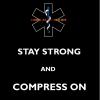Leaderboard
Popular Content
Showing content with the highest reputation on 01/27/2010 in all areas
-
http://www.click2houston.com/news/22322687/detail.html Farmer's Mouth-To-Snout CPR Saves Piglet Wash State's 'Pig Pig' Survives With Help Of Dog, Farmer POSTED: Saturday, January 23, 2010 UPDATED: 1:39 pm CST January 23, 2010 LA CENTER, Wash. -- A Washington state piglet's recent tale of swine survival not only involves man, but man's best friend, too. Portland, Ore., affiliate KPTV reports that Pig Pig, who lives on Heidi and Jeff Olson's farm in La Center, Wash., had a rough start to life. The piglet's mother accidentally crushed her after becoming ill from complications during birth. "The mother pig was so sick she actually laid on her and didn't realize it," Heidi Olson said. When Jeff Olson realized what happened, the tiny piglet was near death. "She squished her flat," Heidi Olson said. "She was flat as a pancake, no heartbeat (and) cold." But Jeff Olson reacted quickly in the only way he knew how to save the animal. "He did the first thing that came to mind, which is mouth to snout," Heidi Olson said. After about five minutes of mouth-to-snout CPR, Pig Pig began to breath on her own. Pig Pig was the only surviving piglet of the litter, and her mother died, the Olsons said. Saving the piglet would be difficult with no mother to feed her, the family said. Again, the Olsons improvised, placing Pig Pig with a litter of Red Healer puppies to see whether their mother could look past the obvious differences. "The momma dog looked at me like, 'Are you crazy?' But nature took over and her mothering instinct took over and she brought her in as one of her own," Heidi Olson said. Weeks later, Pig Pig is thriving and appears set to live a long and happy life. "The only problem is the pig now thinks she is a dog," Heidi Olson said.1 point
-
Okay - For those states where medics are allowed to terminate resucitation efforts OR declare death on scene - what is your protocol for doing so? Here there are a few things required 1. Determination of Death class must be completed 2. 6 inch strip must be ran confirming asystole in all 3 leads To even qualify for it - 1. Injury incompatible with life (burned beyond recognition - and no large surface area does not equate, we're talking entire consuming of body by fire and is blackened, or complete decapitation) 2. Resucitation effort exceeding 30 min with no return of pulse or shockable rhythm (or complete exhaustion of provider, but I'm not aware of a case involving that). They keep flipping back and forth - have to work it to the hospital and let doc decide 3. Presence of Dependent Lividity or Rigor Mortis Anybody else out there follow a similar protocol? I should think so, but with the amount of these cases happening, it's making me question whether the medics are just not following protocol and calling people dead they think should be dead OR further training needs to be happening. Either way, there's a problem and it needs to be fixed !1 point
-
They are NOT prohibited or suspicious by TSA regulations. There is no reason you would not be able to carry them. I will, however, second the lack of confidence in the TSA and their ability to even observe their own regulations. Flying from Minnesota to Japan, they took my toenail clippers, but the non-US citizen next to me was allowed to keep her six 12 inch long knitting needles. Go figure.1 point
-
As usual, I'm trolling the Interwebs trying to stay awake while on my shift and giving myself a break from some microbiology homework. I found this really interesting article on MSNBC titled When The Elephant in the Room Isn't Really There and thought it would be something interesting to bring up, especially for those of us who work with the elderly population with any sort of frequency. I had never heard of of Bonnet syndrome before reading this article; brings up some good food for thought. So, what if your patient is oriented, totally there mentally, but insisting that the giant pink elephant is in the ambulance with you? Are they really hallucinating? Is there something pathological going on in their brain? Or is it merely their visual cortex substituting imagery in the absence of readable visual input? Will it change how you interact with this patient at all, now that you have read this article? Wendy CO EMT-B1 point
-
More on the non-psychotic hallucinations - the following day my mother was worse. Her delusions were fixed and I was unable to orient her as I had been the day before. An amazing ICU nurse added another piece to the puzzle. He stated that something about putting patients on the heart/lung machine results in these symptoms more often than not. From Oberlin alumni review heart/lung machine side effects For patients who qualify for bypass surgery, success rates are better than 90 percent. There remain, however, serious side effects that often result from the heart-lung machine itself. Some of the damage is caused by blood clots; patients may experience inflamed kidneys and lungs, and there is a small risk of damage to the retina of the eye. Furthermore, even a small clot can damage the brain. A third to a half of patients who are put on the heart-lung machine may later exhibit cognitive defects, from memory problems and difficulty concentrating to depression and attention deficiency. From the university of California More cognitive problems Patients hooked up to the machine face a two- to four-percent chance of stroke and a 25-percent risk of transitory retinal damage. Post-operative infections may be more of a risk when the machine is used. And cognitive deficits are common. Last June Duke University researchers reported in the New England Journal of Medicine that five years after bypass surgery, 42 percent of patients studied still suffered from a decline in intellectual function. The risk was greatest for the patients who were placed on heart-lung machines. Heart-lung machines provoke the release of a riot of inflammatory molecules capable of harming organs throughout the body, including the brain. Microscopic bubbles from the oxygenator or arterial plaque dislodged during placement of the tubes connecting patient and machine can block blood flow to the brain or other organs. Mechanical damage to fragile blood cells can result in clots. Many elderly and very sick patients have been considered ineligible for coronary bypass surgery simply because they are too weak to withstand the rigors of the heart-lung machine. I think you get the idea. Fortunately for my mother, she was back to normal today. I think it's interesting that I was never informed of these risks prior to the surgery (not that it would have changed the decision.) It's interesting that retinal damage is something that occurs from being on the heart/lung machine, and as Wendy pointed out, these non-psychotic hallucinations are related to visual problems. PS.. I love this site! It makes me think and learn.1 point
-
I wonder, was the pt in asystole, or persistant V-Fib when they transported to the hospital? I assume that since you mention amiodarone, he was in V-Fib. So, it could be argued that the pt may be potentially salvagable, although quite a long shot at this point. The paramedic may have been reluctant to call a pt that wasn't presenting with PEA or asystole. Not being familiar with your system, I don't know what medications you have on truck. I suppose the hospital would be able to perform an ultrasound of the heart to determine if it is contracting at all. As far as the issue at hand goes, I would agree that your paramedic didn't perform as prefectly as he could have in this situation. A couple mins of CPR between intubation attempts would have been ideal. Better yet, if he was considering transport, intubation in the ambulance would have been ideal. That said, I would also ask you what was done before he tried to intubate. How long had CPR been in progress? How many shocks had been given at this point? How many rounds of Epi had been administered? Was the V-Fib coarse or fine? That said, it might be a good idea to ask the medic in question why he did what he did, see if he knew some facts that you didn't about the situation.1 point
-
I don't see why gloves would be banned. Only an idiot would consider a pair of nitrile gloves to be dangerous, however this is the TSA that we're talking about.1 point
-
ScoobyKate, he can bash them if he wants to, tis a free country. I find it comical sometimes. This issue and a majority of issues found with cases concerning vollies is plain and simple.... lack of medical oversight. Paid services have people who do that 24/7 (QA/QI). The paid services obtain training for their employees to be able to handle these types of calls. Just by reading what the news reporter wrote. The use of restraints was indicated with this incident. He presented with a classic case of agitated delirium, caused harm to himself (stabbed himself), and ran from authority. He's now a threat to himself, a threat to me, a threat to my partner, and a threat to anyone else on the road, while my partner is navigating the route. The unpredicability of mental patient's like this requires you to counteract that unpredictability and plan ahead. This guy wouldn't of step foot inside my ambulance without being restrained. Had the guy been properly restrained and monitored this would of never happened. Oh crap I forgot to clarify restraints..... soft wrist restraints with police escort following behind the rig. Ativan or IN Versed at the ready just in case.1 point
-
If it's a nonlifethreatening situation, then there is no reason why someone cannot wait. If a system decides it will respond to and transport essentially every call, then barring unlimited resources, what else can you do? If someone c/o a lacerated finger, I'm thinking the odds of it developing into a life threat after a few minutes of waiting are essentially nil. Again, unless a crew can downgrade or offer alternatives to an ambulance transport once they assess the problem, people will still abuse the system. Leg pain x's 3 months turns into chest pain, but if the person has underlying medical problems, you could argue all day about the "potential" for a DVT or other serious problem, and the person is transported anyway. The problem is a societal issue. Unless there are consequences for misusing an emergency system, nothing will change. If I call 911 and my problem is NOT a life threat, my insurance will not cover the ride. Same for getting prior approval for an ER visit- if I simply show up with a sore throat at an ER without making the proper notifications, I eat that bill. Even for someone on public assistance, there needs to be some central clearinghouse/screening process that assesses the need for an emergency response and gives prior approval. We do not have that threshold to funnel nonemergency cases away from the emergency system for anyone who does not have private insurance. Obamacare will not change this problem. I admire what Cleveland is trying to do, but I think their city lawyers may be getting really busy.1 point
-
This subject has come up before.. and the replies seem to all go the same direction. Anyone who took the Community College version of the EMT program thinks it cannot possibly be taught effectively in the 14 days. My local CC teaches it in 3 months for a total of 110 hours- plus the required 8 hours of ride time (clinical). On the other hand, anyone who took their EMT training thru their local FD says it can easily be taught in less than 14 days since they work much longer days. Unitek gives 160 hours of instruction, 12 hours of ride time and tons of simulations. Knowledge is tested daily and students can and do flunk out of the program. Speaking from experience: I took the Unitek 14 day Bootcamp back in 2006 and i did a 12 hour ride along with King American in San Francisco. At the end of my 14 days of training-(each day in a classroom from 7am till 8pm and with 4 hours of hands on and 1 hour of testing each day) I then took the National Registry exams. Guess what? I pass with scores in the high 90's. After returning to my home state, I applied for reciprocity and took my state practicals and written exam- guess what? I passed with a 98%. Since then I have taken the SOLO Wilderness EMT program and over 300 hours of other continuing education. Bottom line- No one is fully prepared for every possible situation they could encounter with only 14 days (160 hours) of education in a field completely new to them. So, did 14 days prepare me for a career as an EMT?- it gave me the baseline of needed information and it made me feel confident enough to work with a partner who had more field time. But just as a side note- my first ambulance company job (I worked for a different company FT for 1.5 years) paired me with 2 partners (different shifts)- 1 who had his CC trained state license for 12 months and knew nothing- no even how to palpate vitals. And the 2nd who has just completed her medic license 3 days before leaving the military and did not have our state license yet- She also knew no where near enough to pass our state exam. But hey, neither of them did their training in 14 days! How well you know information and can take it and use it in the field has more to do with the person and how they learn/retain information than it does how many days it was given. And since know one has noticed yet.. The former Director of Education for Unitek is the same man who started the Paramedic Bootcamp program in Iowa. He taught the EMT Bootcamp for 2 years before leaving to start his own company. But i am sure this debate will continue....1 point
-
The unfortunate truth is that, no matter how fast your connection is, EMT City is quite possibly the slowest website on earth. :?1 point
-
Hey baby, you got girlfriend Vietanm? Best bit ever, makes a really good ringtone when on jobs ....0 points
-
The TSA is a joke and a farce. I have caught TSA agents alseep at the x-ray machine and alseep on seats at Logan, SFO and Dallas-Ft Worth. I have had bags put through for search not searched and have been told that I do not need to be searched because the same guy searched me yesterday. I've gone through with some nitrate gloves stuffed in my back pocket no problem.0 points
-
It notes that left ventricular failure should be treated in-hospital with IV nitrates, duiretics and vasodialstors where feasible. Note here its right ventricular failure or could be complete heart failure but it's not like we can do an echo or other cardiac imaging to differentiate betweeen complete heart failure and cardiogenic shock caused by right ventricular failure.-1 points
-
Yeah if this guy started to crash I'd get into the drug roll otherwise the agreeable consensus is on supportive care. I was more interested to see how many would dip into the tacklebox without considering that it can do more harm than good in a case like this. The way various standing orders are written and ambo's are taught leaves something to be desired here too, ours for example make no mention of it. I know it SHOULD be known by virtue of education, but well, so much for education in some cases. Now it may be implied that out there in the periphery ambos should spot the larger clinical signs and not load our man up on GTN, fluids, morphine and frusemide but we both know there are ambos out there who have no peripheral vision whatsoever! Me however, I'm just a blind bastard plain and simple!-1 points
-
You've been Frank'd havent you? Check out this fab podcast http://www.learnoutloud.com/Podcast-Directory/Science/Biology/Biology-2120-Lectures-on-Anatomy-and-Physiology-Podcast/18745-1 points
-
-1 points
-
I wonder how many TVs were destroyed at stations around the country when Trauma made its debut here on Sunday Well Anthony if you ever want to get into acting I know some actors in LA, heck, he's even in the same SAG getup as Randy Mantooth; reckons he's an ass-1 points
-
-1 points







